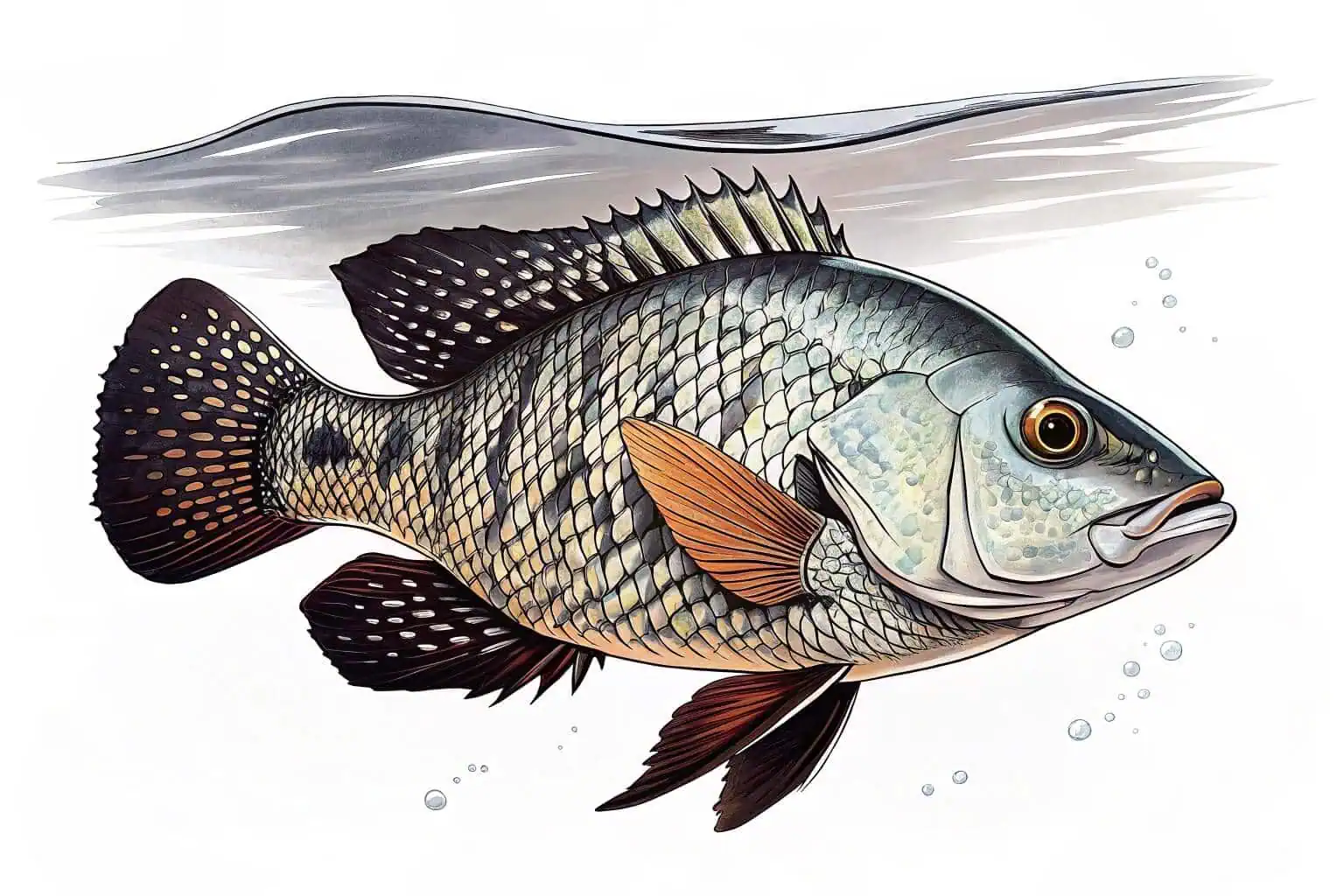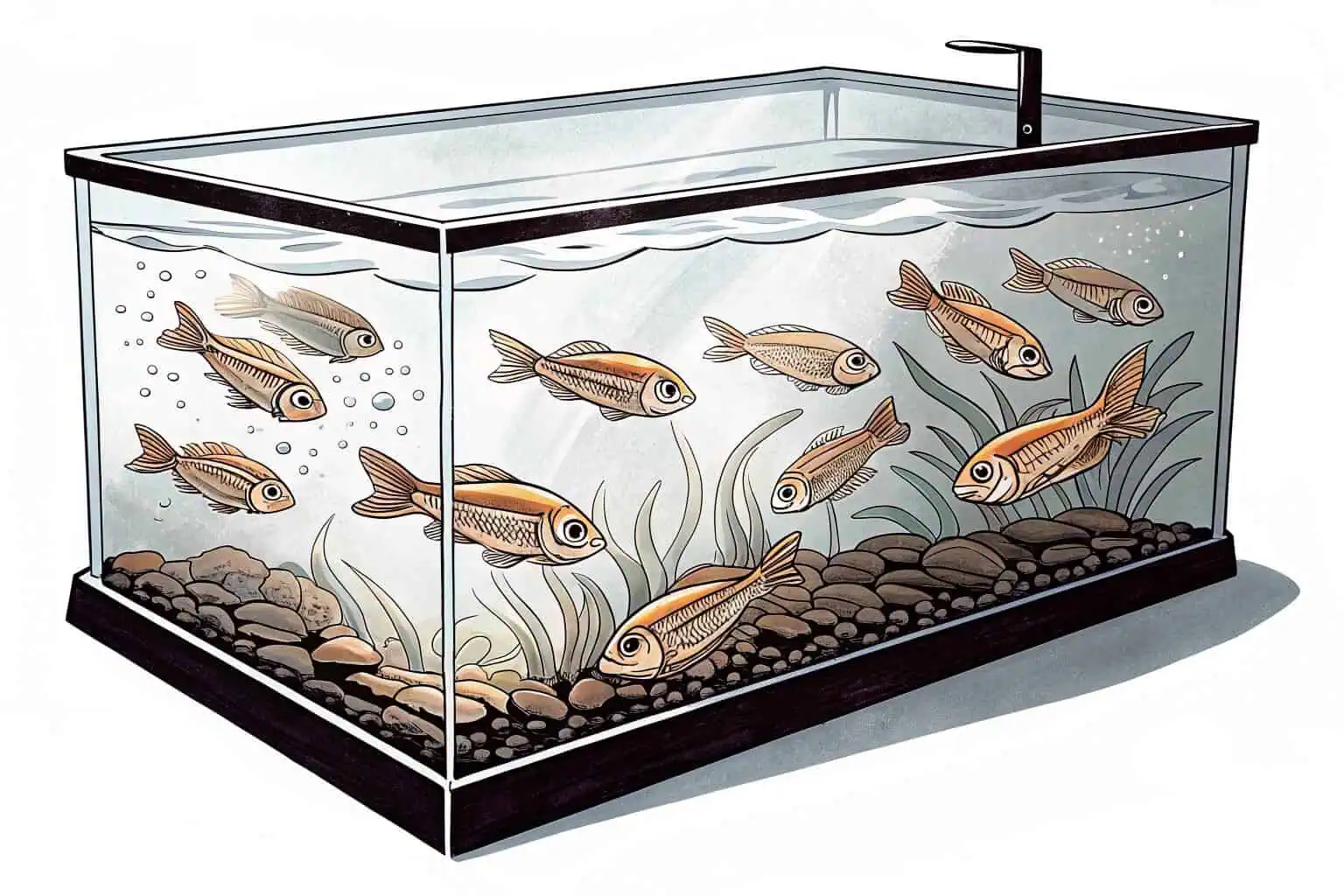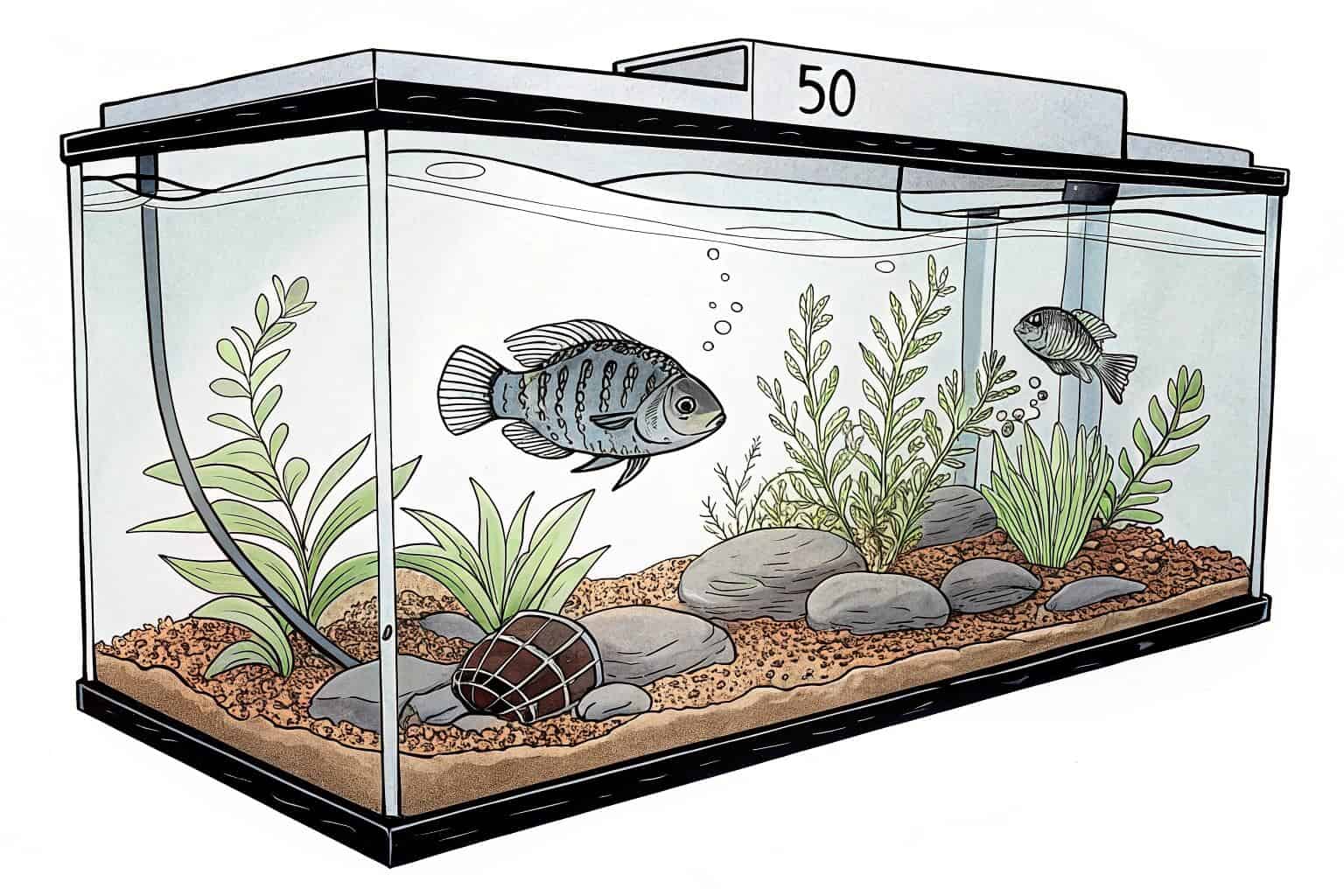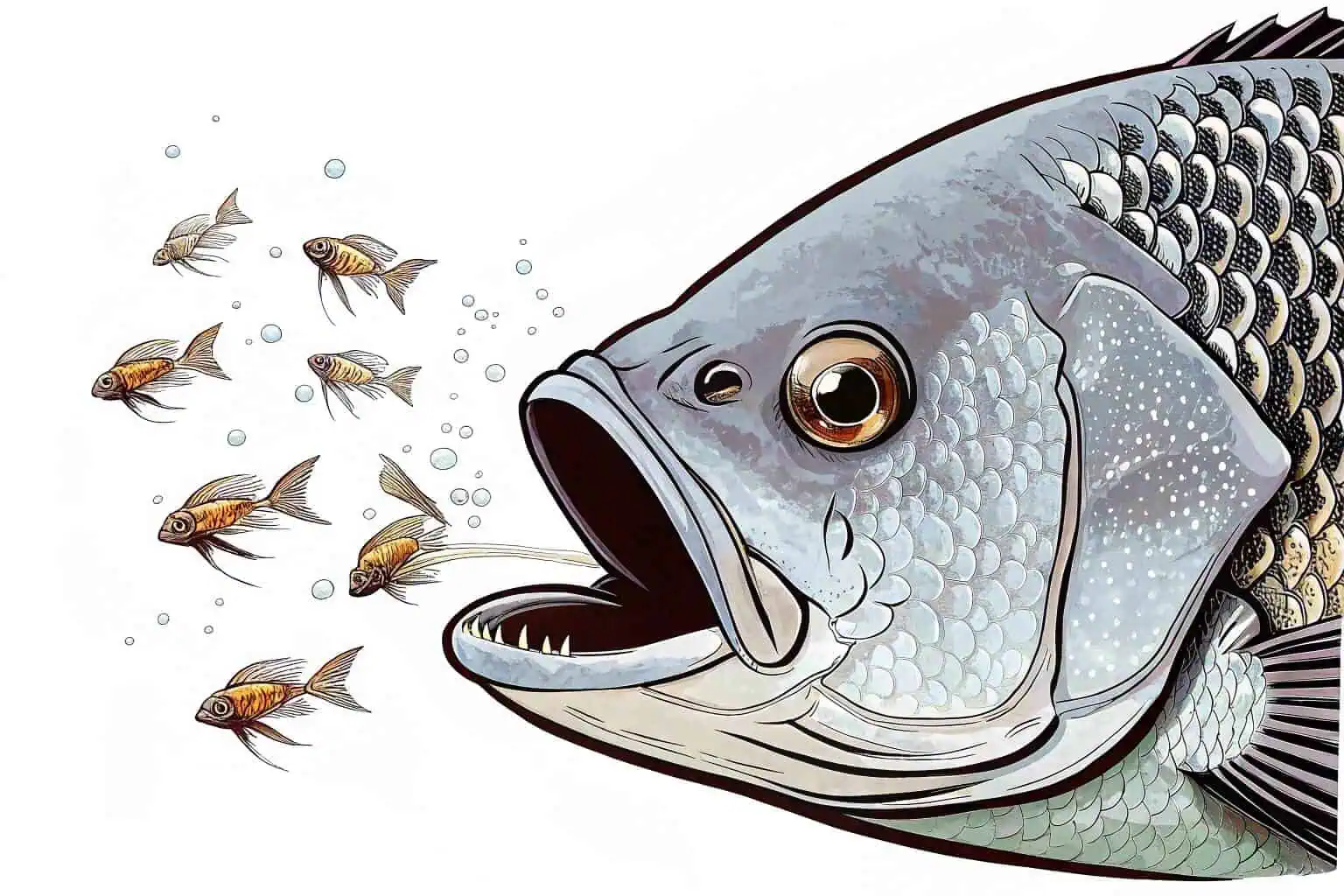How long does tilapia take to grow?
Struggling to figure out tilapia growth timelines for your farm? It's a common puzzle for many fish farmers. Knowing the growth cycle is key to planning and profits.
Tilapia typically take about 6 to 9 months to reach a harvestable market size of around 1 to 1.5 pounds, depending heavily on water temperature, feed quality, and stocking density. Warmer waters (82-86°F or 28-30°C) accelerate growth significantly.

Understanding how fast tilapia grow is super important if you're thinking about raising them. It helps you plan everything, from when you'll start seeing returns to how you manage your farm. I've learned a lot about this over the years, and I want to share some of that with you. Let's dive into what makes these fish grow and how you can help them reach their best size.
How quickly does tilapia grow?
Wondering if tilapia are fast growers for your aquaculture project? Many new farmers ask this. Fast growth means quicker turnover and potentially better income.
Tilapia are known for their rapid growth, especially in optimal conditions. Young fry can grow to a few inches in just a couple of months, and with good management, they can reach market size in well under a year. This makes them a popular choice for fish farming.

When I first started, I was amazed at how quickly tilapia can pack on weight. It's one of their biggest advantages. But it's not just magic; several things play a big part in their growth speed. We need to look at factors like the water they live in, the food they eat, and how crowded their home is. Getting these right is the secret to helping your tilapia grow fast1 and healthy. Let's break down these key elements because, believe me, paying attention to the details here can make a huge difference in your harvest.
Water Temperature's Role
Tilapia are warm-water fish2. This means the temperature of their water is a huge deal for how fast they grow. If the water is too cold, their metabolism slows down, they eat less, and their growth stalls. I've seen this happen – a sudden cold snap can really set you back. The ideal range is generally between 82°F and 86°F (28°C to 30°C). In this zone, they are active, eat well, and convert feed into growth efficiently. If you're in a cooler climate, you might need to think about heating your water, which adds to costs but can be essential for good growth rates. I always keep a reliable thermometer3 in my tanks and ponds and check it regularly. It's a simple step but so important.
Feed Quality and Frequency
What you feed your tilapia and how often you feed them is just as important as water temperature. Tilapia are omnivores, but for fast growth, they need a high-quality, protein-rich diet4. Commercial tilapia feeds are formulated to provide the right balance of nutrients. I've experimented with different feeds over the years, and I've found that skimping on feed quality usually costs more in the long run due to slower growth and potential health issues. Young tilapia, or fry, need a higher protein content than adults. Also, feeding frequency matters. Small, frequent meals are often better than one large meal, especially for younger fish. I typically feed my market-size tilapia 2-3 times a day, ensuring they consume the food within about 15-20 minutes. Overfeeding can pollute the water, so it's a balance.
Stocking Density Impact
How many fish you put in a tank or pond – the stocking density – also affects growth. If it's too crowded, the fish compete for food and oxygen, and stress levels go up. This stress can slow down growth and make them more susceptible to diseases. I learned this the hard way early on, trying to maximize my space. But lower densities often lead to larger, healthier fish, even if the total number is less. You need to find the sweet spot for your specific system, whether it's a tank, raceway, or pond. Good water circulation and aeration5 can help support higher densities, but there's always a limit. Regular water quality testing becomes even more critical at higher stocking densities to manage waste buildup.
How many tilapia are in a 50 gallon tank?
Got a 50-gallon tank and dreaming of raising tilapia? It's a common starting point for hobbyists. But how many can you actually keep healthy in that space?
For a 50-gallon tank, you could responsibly raise about 5 to 7 adult tilapia to market size, assuming excellent filtration and aeration. For grow-out, starting with more fingerlings and thinning them as they grow is a common practice.

A 50-gallon tank is a great way to get your feet wet with tilapia farming6, maybe for personal use or a small-scale experiment. I've helped a few friends set up systems like this. While it's not going to yield a commercial harvest, it's perfect for learning the ropes. The key thing to remember with smaller tanks is that water quality can change very quickly. So, good filtration and regular water changes are absolutely essential. Let's look at what you need to consider to make it work.
Filtration is Key
In a smaller system like a 50-gallon tank, waste products from the fish can build up fast. Ammonia, nitrite, and nitrate are the main concerns. A robust filtration system7 is non-negotiable. You'll need both mechanical filtration (to remove solid waste) and biological filtration (to convert harmful ammonia and nitrite into less harmful nitrate). I often recommend a good canister filter or a sump-based system for tanks this size if you're serious about keeping tilapia. Some people even build their own DIY filters. Whatever you choose, make sure it's rated for more than your tank's volume to be safe. I also suggest adding an air stone or two for extra aeration, as tilapia need plenty of oxygen, especially when they're actively feeding and growing.
Gradual Stocking and Growth
You won't put 5 adult tilapia8 into a 50-gallon tank from day one. You'd typically start with smaller fingerlings, maybe 10-15 of them, and then as they grow, you'll need to thin them out. This is because their biomass – the total weight of fish in the tank – increases, and so does their waste production and oxygen demand. Some people will harvest a few smaller fish along the way, or move them to a larger system if they have one. It's a dynamic process. I always advise people to monitor their fish closely for signs of stress, like gasping at the surface or lethargy, which can indicate overcrowding or poor water quality.
Water Changes and Monitoring
Even with great filtration, regular water changes are vital in a 50-gallon tank. I'd recommend changing about 20-30% of the water at least once a week, maybe more frequently if your stocking density is on the higher side or if water tests show rising nitrate levels9. Using a water test kit10 regularly (testing for ammonia, nitrite, nitrate, and pH) is something I can't stress enough. It's like a health check-up for your tank. It tells you what's going on with the water chemistry before your fish start showing signs of trouble. This proactive approach is what separates successful small-scale aquaculturists from those who struggle.
How many tilapia can I put in a 1 acre pond?
Planning a larger scale tilapia operation with a 1-acre pond? This is where things get more complex. The number of fish depends heavily on your management style.
In a 1-acre pond, you can stock anywhere from 2,000 to 6,000 tilapia, or even more with intensive aeration and feeding. For extensive (low input) farming, a lower density like 2,000-3,000 is common. Intensive systems can push this higher.

Moving to a 1-acre pond is a big step up from a tank. It's what many commercial operations aim for. I've worked with several farms that manage ponds of this size, and the potential is significant. However, it also comes with its own set of challenges. Unlike a tank where you have a lot of control, a pond is a more natural ecosystem11, and you're working with it, not just controlling it. The number of tilapia you can successfully raise depends on how you manage that ecosystem. Let's explore the different approaches.
Extensive vs. Intensive Farming
There are generally two main approaches to pond farming: extensive and intensive.
| Feature | Extensive Farming | Intensive Farming |
|---|---|---|
| Stocking Density12 | Lower (e.g., 2,000-3,000/acre) | Higher (e.g., 6,000+/acre) |
| Feeding13 | Relies more on natural productivity | Relies heavily on supplemental feed |
| Aeration | Often minimal or none | Usually requires significant aeration |
| Management14 | Less labor-intensive | More labor and technologically intensive |
| Risk | Lower, but lower potential yield | Higher, but higher potential yield |
With extensive farming15, you stock fewer fish, and they rely more on the natural food produced in the pond (like algae and insects). You might supplement their diet a bit, but it's not the primary food source. This is lower cost and lower risk, but your yield per acre will also be lower. I've seen this work well for farmers who want a more hands-off approach.
Intensive farming is the opposite. You stock a lot more fish, provide most or all of their food with commercial feeds16, and often use aerators to keep oxygen levels up. This can produce much higher yields, but it's also more expensive, requires more management, and carries higher risks if something goes wrong, like an aerator failing or a disease outbreak.
Aeration and Water Quality
If you're aiming for higher stocking densities in your 1-acre pond, aeration is crucial. Tilapia, like all fish, need oxygen, and in a heavily stocked pond, especially during warm weather or at night when algae consume oxygen, levels can drop dangerously low. I've seen entire ponds lost due to oxygen depletion. Paddlewheel aerators, aspirators, or diffusers can be used. Regular water quality monitoring is also essential. In a large pond, you'll be checking things like dissolved oxygen, pH, and ammonia. You might also manage algae blooms17, as excessive algae can lead to oxygen crashes.
Pond Preparation and Management
Before you even stock fish, preparing the pond is important. This might involve liming to adjust pH, fertilizing to encourage natural food production (especially for extensive systems), and ensuring there are no predators. Once stocked, ongoing management includes regular feeding (if applicable), monitoring fish health, and managing vegetation around the pond18. It's a continuous cycle. I always tell people that a pond is a living thing, and you need to learn to read its signs.
How fast do tilapias breed?
Concerned about tilapia overpopulating your pond or tank? Their breeding speed is a well-known trait. Understanding it is key to managing your stock effectively.
Tilapias are prolific breeders. Females can start breeding when they are just a few months old and can spawn every 4-6 weeks in warm water conditions. A single female can produce several hundred fry per spawn.

One of the first things I learned about tilapia is that they breed... a lot! This can be a good thing if you want to grow your own fingerlings, but it can also be a big problem if you're trying to grow fish to market size. Uncontrolled breeding leads to overpopulation, stunted growth (because there are too many mouths to feed), and can make harvesting difficult. So, managing their breeding is a really important part of tilapia farming. Let's look at why they breed so fast and what you can do about it.
Breeding Behavior
Most commonly farmed tilapia species, like Nile tilapia (Oreochromis niloticus)19, are mouthbrooders. This means the female lays eggs, the male fertilizes them, and then the female (or sometimes the male, depending on the exact species) picks up the eggs in her mouth and holds them there until they hatch and the fry are old enough to swim on their own. This parental care gives the fry a high survival rate. In warm water (above 70°F or 21°C), they can spawn repeatedly. The female will often stop eating while she's brooding, which can affect her own growth. I've seen ponds become overrun with tiny, stunted tilapia because breeding went unchecked.
Managing Unwanted Breeding
There are several ways to manage or prevent unwanted breeding in tilapia grow-out systems:
- Monosex Culture20: This is the most common method. You stock only male tilapia. Males grow faster and larger than females because they don't expend energy on reproduction and don't stop eating to brood eggs. You can buy all-male fingerlings from hatcheries. These are often produced using hormonal sex reversal when the fry are very young. This is a safe and widely used practice. I almost exclusively use all-male fingerlings for my grow-out ponds.
- Predator Fish21: In some pond systems, a small number of predator fish (like largemouth bass or catfish, though be careful with catfish as they might also be your target species!) can be introduced to control the tilapia fry. This is a more natural approach but can be tricky to balance.
- Cage Culture22: Raising tilapia in cages within a larger pond or lake can also help manage breeding. If the mesh size of the cage is small enough, eggs laid by any females might fall through and be lost or eaten by fish outside the cage. However, some breeding might still occur within the cage.
- Regular Harvesting: If you're not using monosex culture, frequent harvesting of market-sized fish and removal of smaller, unwanted fish can help keep populations in check, but this is very labor-intensive.
For most commercial operations focused on producing food fish, monosex male culture is the way to go. It simplifies management and maximizes growth.
Conclusion
Tilapia farming offers great potential due to their fast growth and adaptability. Success hinges on understanding their needs for warm water, good food, and proper stocking, plus managing their prolific breeding. With care, you can achieve a rewarding harvest.
-
Discover essential tips and techniques to optimize tilapia growth for a healthier and more productive harvest. ↩
-
Exploring this resource will provide insights into the advantages of warm-water fish like tilapia in aquaculture, enhancing your understanding of their growth needs. ↩
-
Discovering the best thermometers for fish tanks will ensure you maintain the right temperature for your tilapia, promoting their growth and well-being. ↩
-
Explore this link to understand the best dietary practices for tilapia to ensure optimal growth and health. ↩
-
Effective water circulation and aeration can significantly improve fish health. Learn more about their benefits and how to implement them. ↩
-
Explore this link to learn effective techniques and tips for successful tilapia farming, especially in smaller setups. ↩
-
Understanding robust filtration systems is crucial for maintaining a healthy aquarium environment, especially for tilapia. ↩
-
Explore this link to learn effective strategies for raising adult tilapia, ensuring a healthy and productive aquaculture system. ↩
-
Learn about the impact of nitrate levels on fish health and how to manage them effectively for a thriving aquarium. ↩
-
A water test kit is essential for maintaining a healthy aquarium. Discover how it can prevent issues before they arise. ↩
-
Exploring the impact of natural ecosystems on aquaculture can provide insights into effective management strategies. ↩
-
Understanding stocking density can help optimize farming strategies for better yields and sustainability. ↩
-
Exploring feeding methods can reveal ways to enhance productivity and efficiency in farming operations. ↩
-
Learning about management practices can lead to improved efficiency and profitability in intensive farming systems. ↩
-
Explore the advantages of extensive farming, including cost-effectiveness and lower risk, which can lead to sustainable practices. ↩
-
Discover the types and benefits of commercial feeds in aquaculture, essential for maximizing fish growth and health in intensive systems. ↩
-
Explore the causes of algae blooms and their effects on pond ecosystems to ensure a balanced aquatic environment. ↩
-
Proper vegetation management can improve pond health and aesthetics. Learn strategies to maintain a balanced environment around your pond. ↩
-
Explore this link to understand the unique traits and advantages of Nile tilapia, a key species in aquaculture. ↩
-
Explore this link to understand the benefits of Monosex Culture in tilapia farming, including faster growth rates and efficient management. ↩
-
Learn how introducing Predator Fish can naturally manage tilapia populations and maintain ecological balance in your pond. ↩
-
Discover the advantages of Cage Culture for tilapia farming, including breeding control and space efficiency in aquaculture systems. ↩